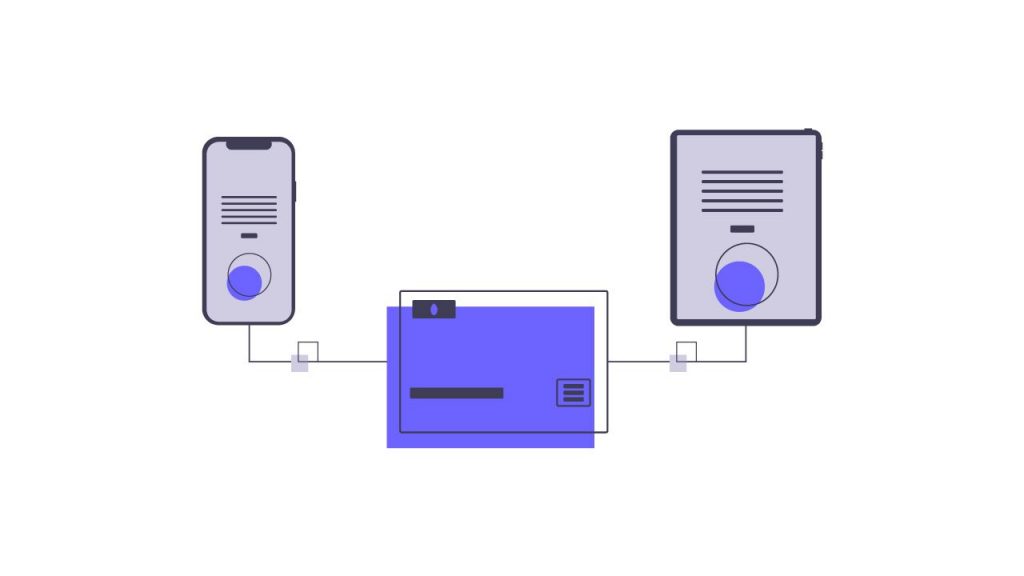If you are directly engaged or somehow related to the eCommerce industry and don’t know about dark stores yet, you’d better hurry up to fill in this gap. We state this as dark stores are an intensively growing eCommerce concept you will soon deal with.

Dark stores or online groceries are growing at different rates in different countries. In the US alone, it’s projected to record around $129 billion online grocery sales by 2023. This number accounts for approximately 10% of total dark stores sales.
Long story short, here comes another retail innovation called dark stores, and this blog post aims to help you figure it out.
What is a dark store?
Think of it as a traditional store, with conveniently arranged aisles and separate shelves for each product category. Yes, there are also sales assistants; however, no customers are physically entering the store.
The scheme is the following:
- Customers make online orders
- Sales assistants pick and pack ordered products from shelves
- The products are delivered to customers
- Buyers make payments online
So, the dark store is meant to provide another advanced level of customer satisfaction. Buyers can buy anything without leaving home and receive orders quickly.
As the goal of online groceries is to provide customers with rapid deliveries, usually those online warehouses are located in places where there is a higher demand for online orders and delivery. In this case, though buyers know your store is located in an area far from them, you can still provide a quick delivery from your dark store located closer to your customer.
What are dark stores usually look like?
Dark stores do not look as presentable as stores open for the public. Also, those stores are not located in central or crowded cities. When choosing the location for an online warehouse, your topmost criteria should be the proximity to the area where there are good roads and a high likelihood of online orders.
This helps to accelerate the delivery speed of electronic orders, as dark stores serve as micro fulfillment centers.
How do customers make orders?
There is an online catalog users have in hand. It can be described as something like your store’s menu. Customers choose what they need and make an order.
Further, the programs of dark stores show the warehouse workers the received orders and suggest where to pick the ordered product according to the store’s layout.
How are products delivered from dark stores to customers?
Organizing the delivery of the ordered products is a subject of the personal choice of each retailer. It’s about how much effort and resources you find optimal to make your customers more satisfied with the delivery.
However, below are the three main types of dark store deliveries that will give you a general industry picture.
- In-store pickup means customers take products from the store’s location without entering and choosing products themselves. There is a special area where employees transfer the products to customers.
- Curbside pickup refers to cases when dark stores employees bring the products to a particular parking space, and customers pick it up by driving to the same place.
- Home deliveries might be the delivery type you are most accustomed with. It’s when a courier brings your ordered products to your house.
Should you consider the dark store concept for your eCommerce business?
Maybe this question has no universal answer for all the companies and industries, but let us state the following.
Dark stores are expanding at growing rates as a new type of shopping that adds significant convenience for customers. As we all know, the customer’s comfort in the 21st century, especially after the pandemic, is what companies must follow to bear the competition.
So, you are highly recommended to consider the concept of online groceries (or other types of stores) for your business.
Let’s go through some other benefits that dark stores open for a business.
More optimized distribution and fast delivery
Especially in big cities or countries, it’s not easy to organize a fast delivery from a single location. That’s why opening an online warehouse in the areas from where the company receives the highest quantity of orders saves the situation. Opening darks stores in the correctly chosen locations significantly improve delivery speed and customer satisfaction.
Optimization of costs
It’s times more cost-savvy to construct a dark store rather than having a conventional store. As the former does not accept customers, businesses save a lot of money that they would otherwise spend on bringing the building to a presentable state from inside and outside. Instead, dark stores locate in not crowded areas, where renting or buying properties is cheaper.
Larger availability of products
There are specific rules of product distribution and available free space for conventional stores that retailers should keep. They can’t have too many products at the store, making it inconvenient for the customers to walk around and choose what they want. In the case of dark stores, businesses can store more products at once and therefore suggest a larger assortment to customers.
Improved order management
Sometimes, it can be hard to manage orders coming from numerous channels and don’t miss a thing. In the case of dark stores, all the orders can be done from a single system of online orders, making the tracking and order fulfillment process easier. Integrating multichannel order management software into your order’s system will bring the chances of order fulfillment issues to zero.
Final thoughts
At first, you might think integrating a new concept of dark stores will be an unnecessary cost and hassle. However, this new eCommerce concept’s growth data proves dark stores are here to stay for long. Some specialists even consider that it can partially or fully replace conventional shopping.
So, if you are a forward-thinker and want to withstand the modern competition, don’t overlook the importance of adapting to industry innovations.







